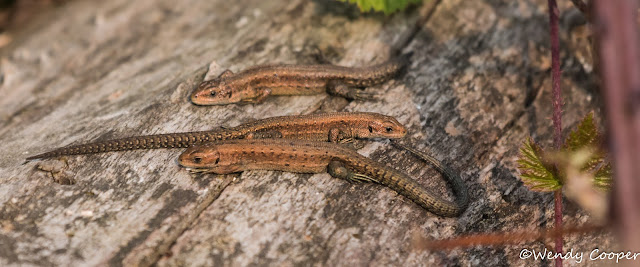A Bit of a Surprise... A new discovery on the local patch.
Well
back at the end of September, I went for a little wander on the Local Patch, to
see what was about. It was a warm sunny afternoon and far too nice to be
indoors.
Most
of the butterflies had disappeared, with just a few Small Whites and Commas
appearing here and there, some were nectaring on a few remaining thistle heads
or hawkbit. I could hear a lot of the birds - Wrens, Long Tailed tits,
Great and Blue as well, Dunnocks and even a couple of Chiff Chaffs, however,
these were only giving brief glimpses and staying mainly tucked away inside the
Blackthorn bushes whilst chattering away. There were also quite a few
Goldfinch flitting from tree to tree and feeding busily. Robins had also
started to sing again from previous perches, renewing their territories.
Comma
Butterfly

Small White Butterfly
I
decided to have a stroll along the edge of the meadow, where there is a small
brook, bordered by banks of brambles and very young oak trees. The path
is also bordered by fairly tall grasses, thistles and common hogweed stands,
all good for minibeast spotting and also for birds feeding in the hogweed.
Along
the brook, there were a fair few Common Darters about, both male and female,
although none of the males would settle, I stopped to watch a female, perched
on a hogweed stem, munching away quite happily on a small snack
Female Common Darter dining out.
After
she had finished munching, she took off and then settled in a particularly warm
spot on a fallen tree trunk. The tree used to be a favourite lookout for
the Kestrels, however, it came down a few years ago. There is not a great
deal of it remaining, that which is, is devoid of bark and mined with (I think)
beetle holes. The wood has weathered and is a silvery colour, as it is in
the sun all day, it is quite a hot spot and I have often seen Darters and
butterflies basking there as well a various other insects scuttling about along
the trunk.
A
quick sunbathe...
As I turned to continue my walk, a sudden movement on the trunk caught my eye. I looked to see what it may have been.. nope, nothing, seeing things! So I waited a moment, peering at the log and suddenly, another movement, I did a bit of a double take, blinked and looked again more carefully; there in front of me was a Common Lizard basking in the sunshine and watching me quite warily.

As I stood, a short distance away and taking care not to block their sunshine, I could gradually see more and more Lizards basking and running around on the log - they are fast! Once they realised that I was no threat, I was able to get some very good views and managed to get a few presentable photographs of them at various life stages - my curiosity had been lit!
Hatchling
Lizard.

The
lizards' markings and colourings are quite variable and it can be a little
tricky to tell the males and females apart, from what I understand, the
males generally have small black and white flecks and the females have a dark
vertebral line and flanks; their colours range from brown to tan to ginger,
green or grey, with on occasion, a black melanistic variant being seen.
One of the things that I did notice, was that quite a few of the lizards had damage to their tails. As a defence mechanism, Lizards are able to shed all or part of their tail by contracting the muscles at a suitable point (the detached part apparently may still move for a short while ) as a distraction or escape from predators. The tail will eventually grow back, although this is a slow process and the new tail will be a slightly different colour to the rest of the Lizard.
Lizard
with a (relatively) new shortened tail.

A pair of lizards where the tails have
regrown, note the 'join' and the different colouration.

As with many reptiles, Lizards also give themselves a complete 'makeover' from time to time, by shedding their skin to reveal a bright, shiny and fresh looking set of colours. Most of the old skin will slough away in one piece, but on a few of the Lizards I saw, there were still a few tatters left around their feet.
(above
and below)
Both of these show signs of
recently sloughing their skins - look carefully around the rear feet.
(larger views here https://flic.kr/p/zB9TYp and https://flic.kr/p/yZMfyV )

Common Lizards are one of our few native reptiles and are a protected species, however, as with any animal or insect that I encounter, their wellbeing comes first and so I observe, with respect, from a distance with minimal disturbance.















